class: center, middle, inverse, title-slide # POLS 1824W - Political Violence ## Introduction <html> <div style="float:left"> </div> <hr color='#EB811B' size=1px width=800px> </html> ### Danilo Freire ### 10 September 2019 --- <style> .remark-slide-number { position: inherit; } .remark-slide-number .progress-bar-container { position: absolute; bottom: 0; height: 6px; display: block; left: 0; right: 0; } .remark-slide-number .progress-bar { height: 100%; background-color: #EB811B; } .orange { color: #EB811B; } </style> # Introduction .font180[**Danilo Freire**] .font120[ * Eu sou brasileiro * Masters from the Graduate Institute Geneva * PhD in Political Economy at King's College London * Postdoctoral Research Associate in the Political Theory Project * Political violence, collective action, public service provision, experimental methods, machine learning * [http://danilofreire.github.io](http://danilofreire.github.io) * [danilo_freire@brown.edu](mailto:danilo_freire@brown.edu) ] --- background-image: url(neymar.jpg) class: clear --- background-image: url(carnaval.jpg) class: clear --- class: clear background-image: url(sp.png) --- class: inverse, center, middle # What about you? <html><div style='float:left'></div><hr color='#EB811B' size=1px width=720px></html> --- # Introduce yourself .font150[ * What is your name? * Where do you come from? * Tell me something I don't know about your city or country * Why are you taking this course? ] --- class: inverse, center, middle # Course logistics <html><div style='float:left'></div><hr color='#EB811B' size=1px width=720px></html> --- # Logistics .font150[ * We meet every Tuesday from 16:00 to 18:30 at [101 Thayer Street (VGQ 1st fl) 116B](http://brown.edu/Facilities/Facilities_Management/maps/index.php#building/VGQUADA) * All course information will be available at [http://danilofreire.github.io/pols1824w](http://danilofreire.github.io/pols1824w) * I might update the syllabus over the course (but not very much) * Office hours: at your convenience (please e-mail me first) * Office address: [8 Fones Alley, first floor, office 114](https://goo.gl/maps/MRQNS9EC9Qv) ] --- # Learning objectives .font150[ * Become familiar with recent theories about the causes and consequences of political violence ] -- .font150[ * Learn how to write referee reports ] -- .font150[ * Write a term paper that can potentially become an academic article ] -- .font150[ * Improve your presentation skills and receive real-time feedback like in an academic conference ] -- .font150[ * .orange[Have interesting and thought-provoking discussions with your colleagues] ] --- # Grading .font150[ * **Participation**: 15% - Ask questions, bring suggestions, help your colleagues * **Three referee reports**: 45% - About 5 pages long, one per section of the course (civil wars, genocide, terrorism) * **Final project**: 40% - About 20 page long, any topic covered in the course - Submit a one-page summary for review on *1st of October*, review your colleagues' work (1 week) - Discuss your paper on the *19th of November* - Send the final manuscript on the *17th of December* ] --- class: inverse, center, middle # Questions? <html><div style='float:left'></div><hr color='#EB811B' size=1px width=720px></html> --- class: inverse, center, middle # Week 01: Long-Term Perspectives <html><div style='float:left'></div><hr color='#EB811B' size=1px width=720px></html> --- # Long-Term Trends on War and Peace .font150[ * **Questions**: - Is there more conflict today than in the 1950s? - What about crime? Are societies in general more violent today than 30 years ago? - Are Western countries more likely to be victims of terrorism?] -- .font150[ * **No.** ] -- .font150[ * **No.** ] -- .font150[ * You guessed it: **No.** ] --- # Crime in the US .center[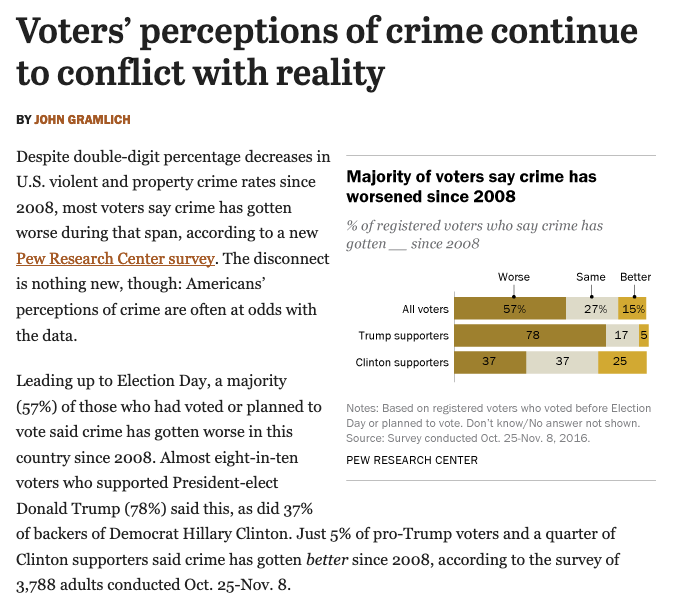] --- # Crime in the US .center[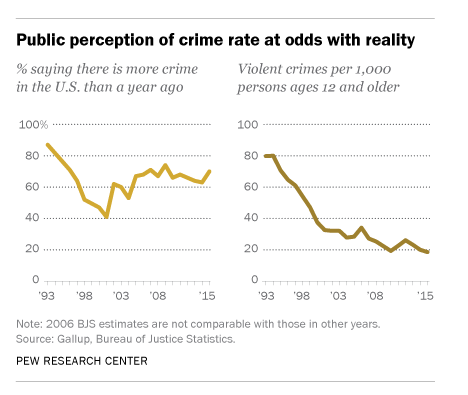] .center[Source: [Pew Research](http://pewrsr.ch/2fxLhfk)] --- # Crime in the UK .center[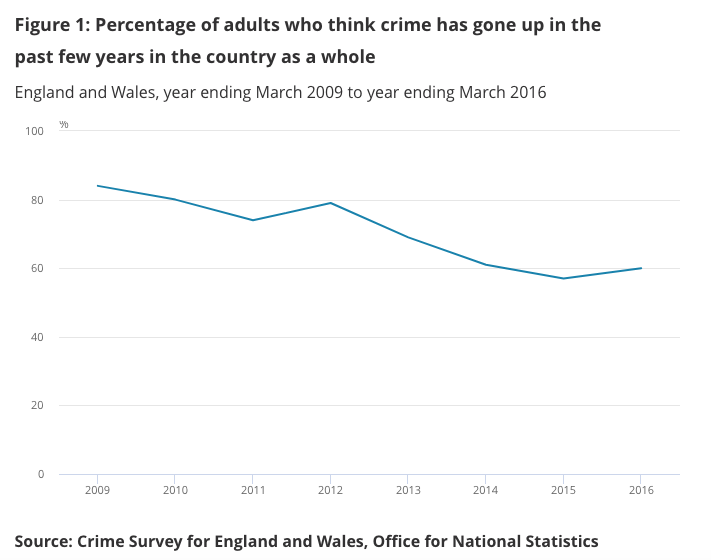] .center[Source: [Office for National Statistics](https://www.ons.gov.uk/peoplepopulationandcommunity/crimeandjustice/articles/publicperceptionsofcrimeinenglandandwales/yearendingmarch2016)] --- # Crime in the UK .center[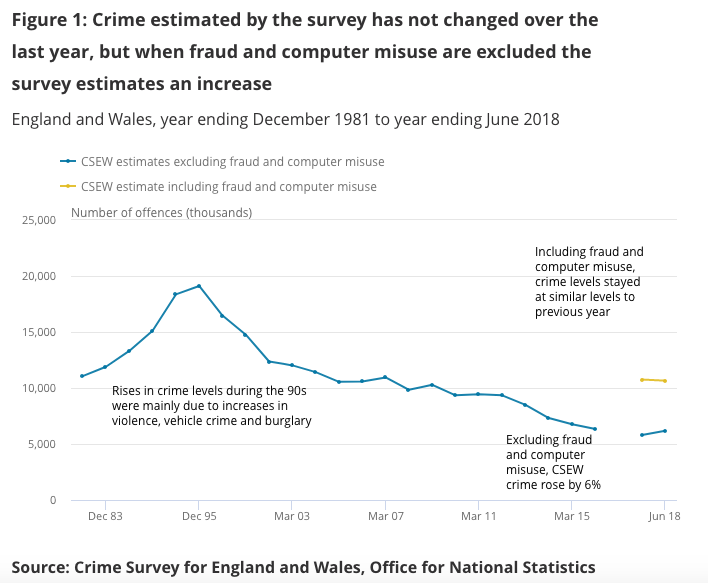] .center[Source: [Office for National Statistics](https://www.ons.gov.uk/peoplepopulationandcommunity/crimeandjustice/bulletins/crimeinenglandandwales/yearendingjune2018)] --- # Are we hard-wired to like bad news? .center[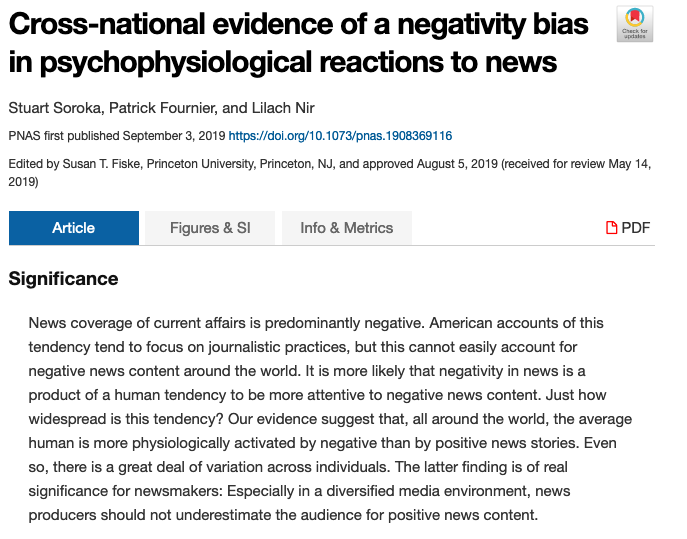] .center[Source: [Soroka et al (2019)](https://doi.org/10.1073/pnas.1908369116)] --- # Are we hard-wired to like bad news? .center[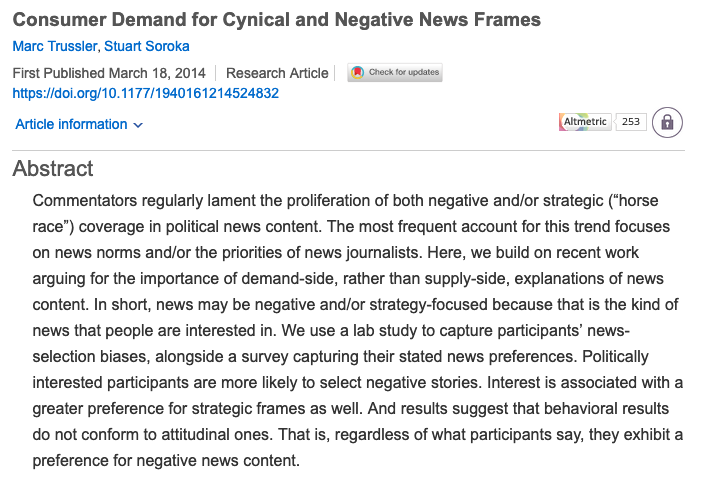] .center[Source: [Trussler and Suroka (2017)](https://journals.sagepub.com/doi/abs/10.1177/1940161214524832?etoc=)] --- # Short-term bias S&P 500 annual returns .center[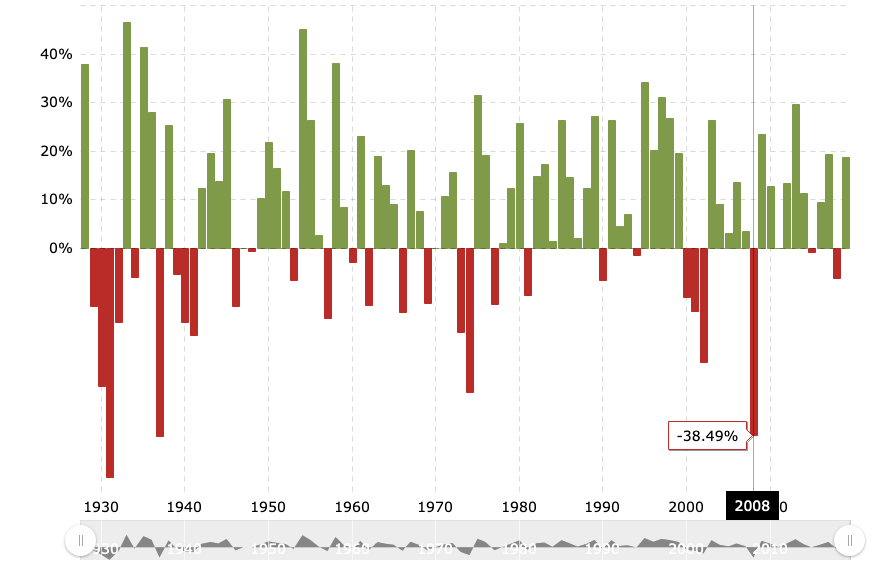] .center[Source: [Macrotrends (2019)](https://www.macrotrends.net/2526/sp-500-historical-annual-returns)] --- # Short-term bias .center[] .center[Source: [Dow Jones (2019)](https://dqydj.com/sp-500-return-calculator/)] --- # Short-term bias DAX 30 Index .center[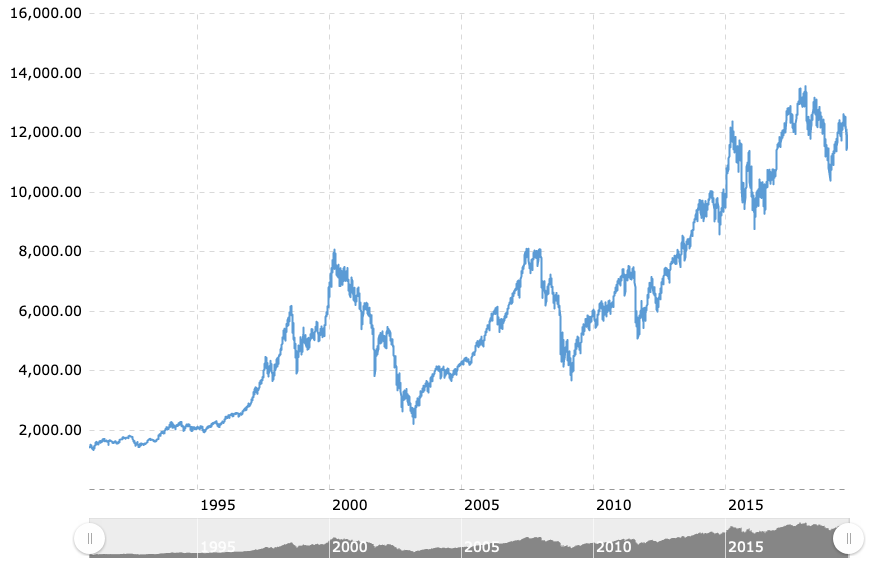] .center[Source: [Macrotrends (2019)](https://www.macrotrends.net/2595/dax-30-index-germany-historical-chart-data)] --- # Short-term bias Ibovespa Index .center[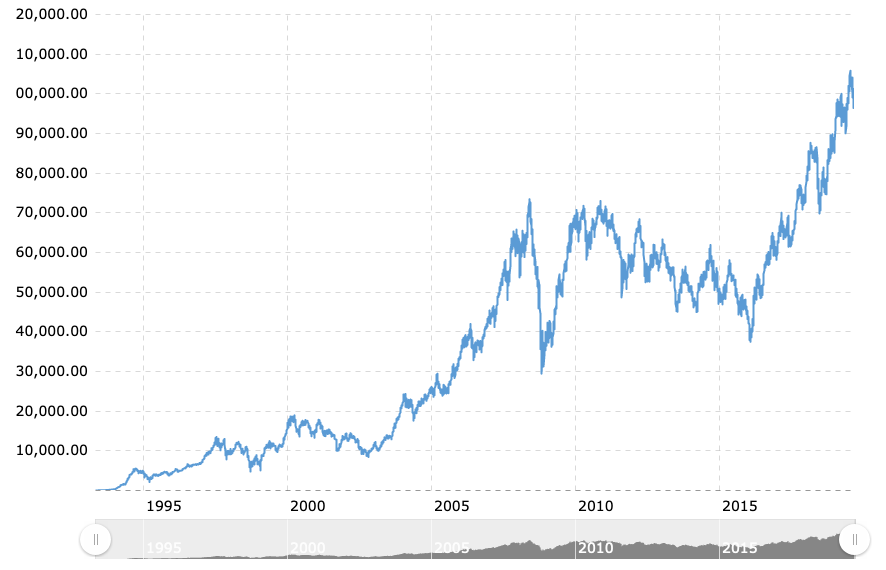] .center[Source: [Macrotrends (2019)](https://www.macrotrends.net/2597/bovespa-index-brazil-historical-chart-data)] --- # Long-term view of the economy .font150[ * **Question**: Imagine you had US$10,000 in 1942 and you invested it in the S&P500. How much money do you think you would have today? ] -- .font150[ * Let Warren Buffett answer that question for you: ] .center[] .center[Source: 2018 Letter to the Shareholders of Berkshire Hathaway Inc: <http://www.berkshirehathaway.com/letters/2018ltr.pdf>] --- # Long-term view of global violence .center[] .center[Source: [Steven Pinker (2018)](https://www.youtube.com/watch?v=yCm9Ng0bbEQ)] --- # Wars among great powers .center[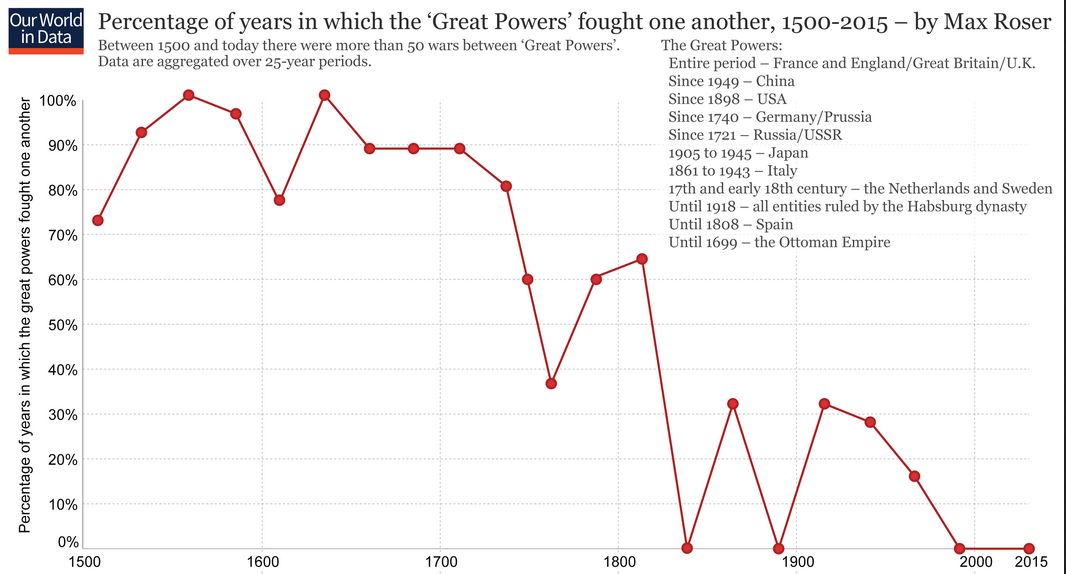] .center[Source: [Our World in Data: War and Peace](https://ourworldindata.org/war-and-peace)] --- # Wars are less violent .center[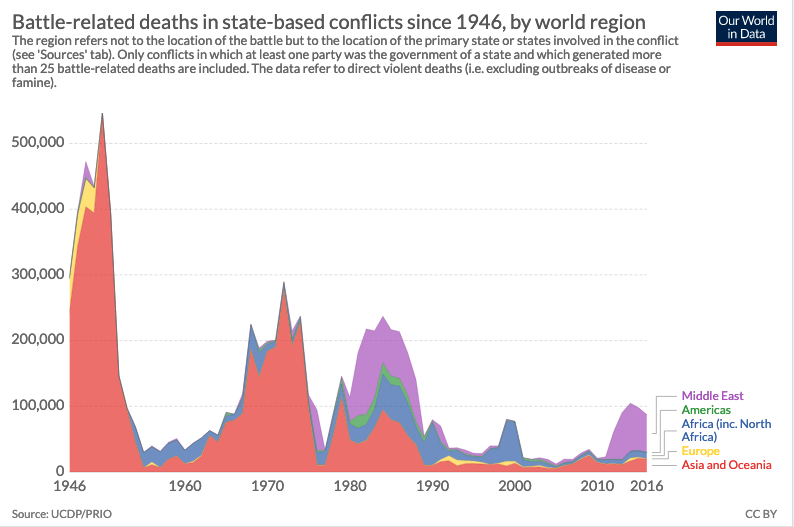] .center[Source: [Our World in Data: War and Peace](https://ourworldindata.org/war-and-peace)] --- # Wars are less violent .center[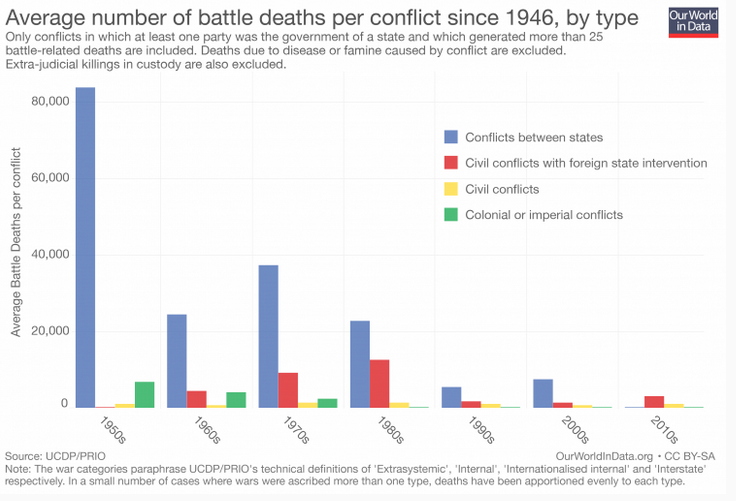] .center[Source: [Our World in Data: War and Peace](https://ourworldindata.org/war-and-peace)] --- # Nuclear war is less likely today .center[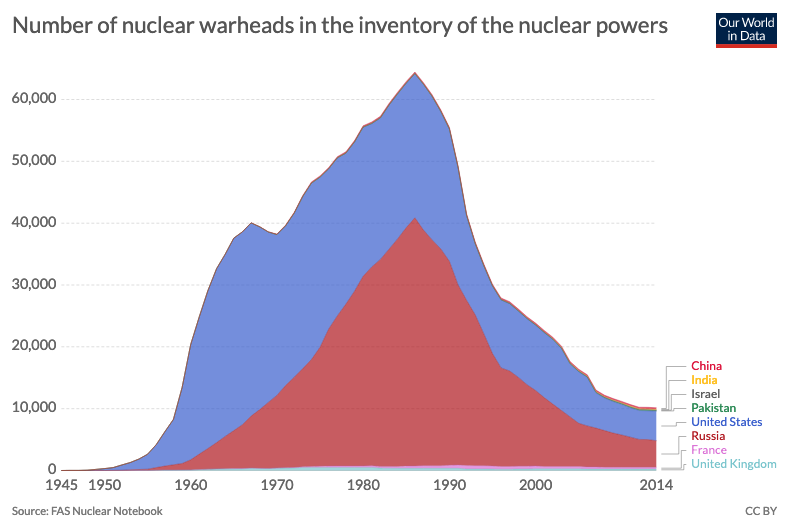] .center[Source: [Our World in Data: Nuclear Weapons](https://ourworldindata.org/nuclear-weapons)] --- # Nuclear war is less likely today .font120[Non-nuclear states that started and stopped exploring nuclear weapons, 1945-2010] .center[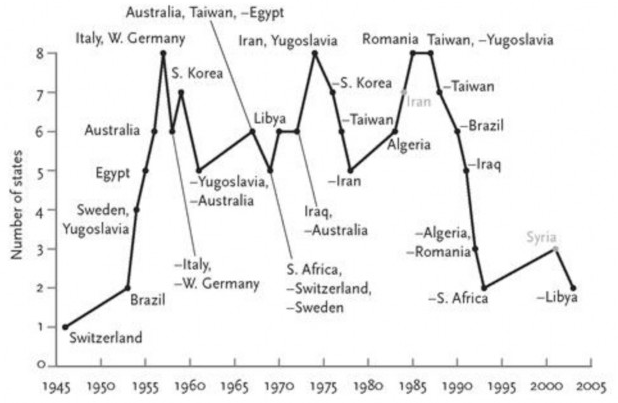] .center[Source: [Steven Pinker (2011)](https://ourworldindata.org/nuclear-weapons)] --- # Genocides are far less common .center[] .center[Source: [Our World in Data: Genocides](https://ourworldindata.org/genocides)] --- # Hijackings disappeared .center[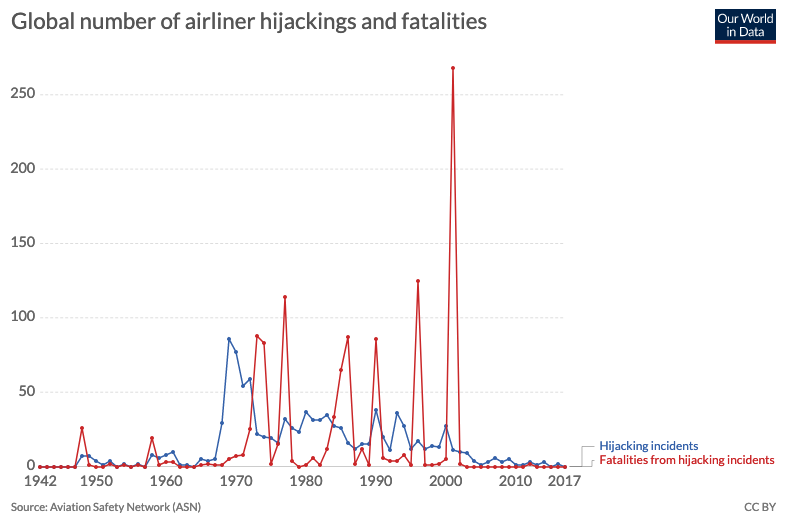] .center[Source: [Our World in Data: Terrorism](https://ourworldindata.org/terrorism)] --- # Terrorism is not common in the West .center[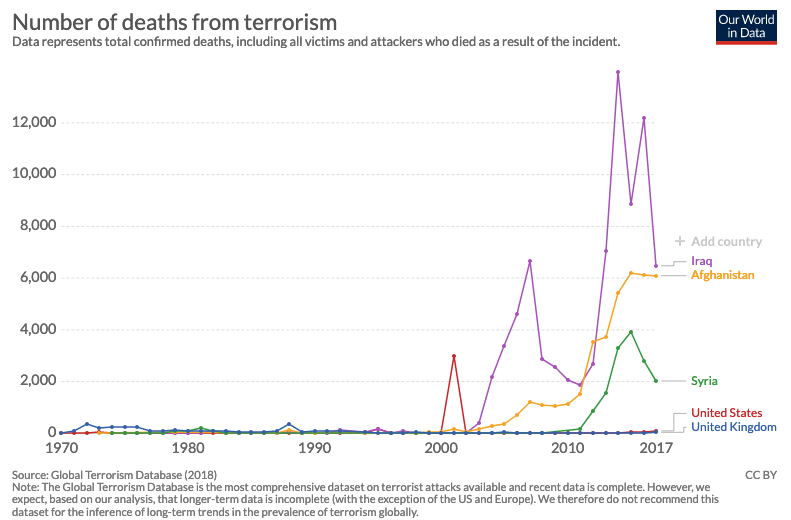] .center[Source: [Our World in Data: Terrorism](https://ourworldindata.org/terrorism)] --- # Even mass shootings aren't increasing .center[] .center[Source: [James Allan Fox (2019)](https://www.vox.com/2015/10/1/18000524/mass-shootings-rare)] --- class: inverse, center, middle # We're more peaceful today, but why? <html><div style='float:left'></div><hr color='#EB811B' size=1px width=720px></html> --- # Pinker (2013) .font150[ * If human nature hasn't changed, what has? ] -- .font150[ * Violence is not constant, but opportunistic ] -- .font150[ * Increased costs of violence: - Stronger governments - Democracy - Trade - International community and organisations - Humanistic ideologies, such as natural rights ] --- # Sceptical view about the long peace .font150[ * What if we haven't had a major war... * ... just because they don't happen often? ] -- .font150[ * **Fat-tailed events**: some events happen so unfrequently that we underestimate them * E.g.: massive financial crises, large disease outbreaks * Pareto principle: 80-20 rule ] -- .font150[ * **Absense of evidence is not the same as evidence of absense** ] --- # Black swan .center[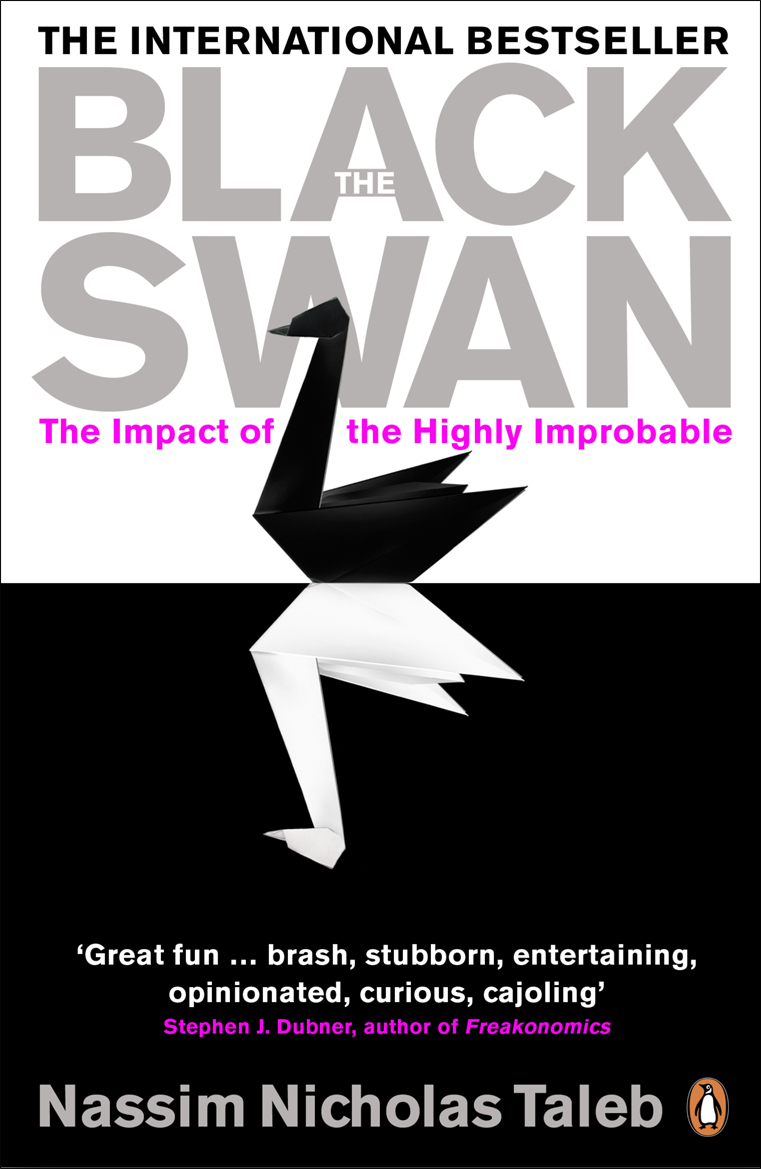] --- # Large wars as black swans .font150[ * Cirilo and Taleb (2015) make two important comments: - 1) The Law of Large Numbers converges much more slowly in fat-tailed distributions - "We require more data to assert that there are no black swans than to assert that there are black swans" - 2) The means are misleading with dealing with extreme events - "for fat-tailed variables, the mean is almost entirely determined by extremes. If you are uncertain about the tails, then you are uncertain about the mean" ] --- # Number of conflicts .center[] --- # Number of battle-related deaths .center[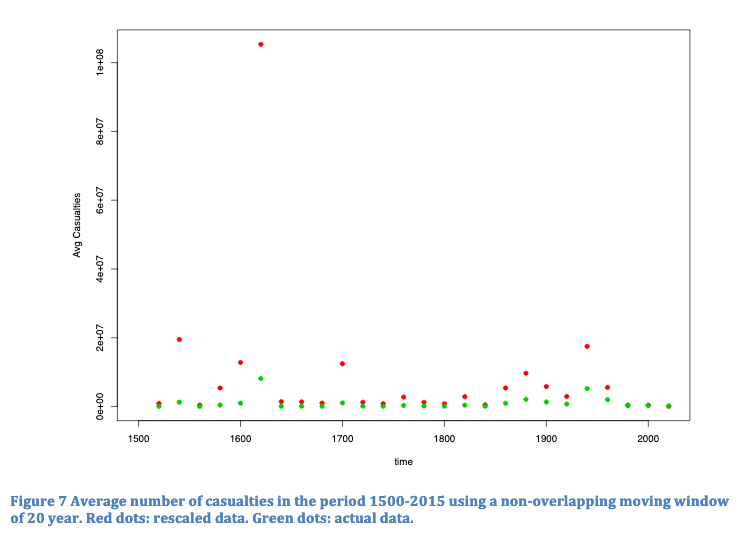] --- # Is there a trend? .center[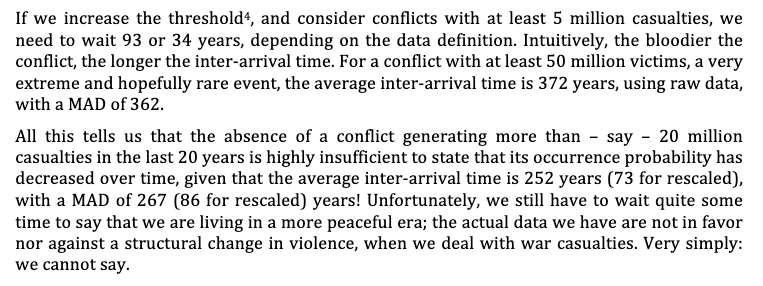] --- class: inverse, center, middle # Are battle deaths decreasing? <html><div style='float:left'></div><hr color='#EB811B' size=1px width=720px></html> --- # Gohdes and Price (2012) .font150[ * What if our data are wrong? * PRIO is the most important think-tank for peace studies * The PRIO Battle Deaths Dataset is widely used in academia * G&P argue that the dataset has a lot of *missing data* and the data is prone to *measurement error* ] --- # Gohdes and Price (2012) .font150[ * Issues of data quality: - No reliable estimates for many conflicts, specially before 1980 - E.g.: "for the Persian Gulf War in Iraq in 1991, the PRIO Battle Deaths Dataset gives a disaggregated best estimate of 28,245, a low estimate of 1,545, and a high estimate of 43,245 killed in combat situations" (p. 1095) - Which one should we believe in? The best, high or low? ] --- # Gohdes and Price (2012) .font150[ * Issues of data availability: - No yearly data available for most conflicts before 1980 - Interpolate mean yearly estimates according to qualitative knowledge of the case, when available - E.g.: "60.2 percent of the units before 1975 do not even include information on conflict-internal trends." (p. 1096) ] --- # Differences in battle deaths .center[] --- # Differences in battle deaths .center[] --- # Convenience samples .font150[ * Why are convenience samples bad for statistical inference? ] -- .font150[ * _Selection bias_ ] -- .font150[ * Can we correct for selection bias in data? ] -- .font150[ * Very rarely: only if we know how the true population looks like. * _We often don't_ * Some statistical procedures can approximate it, but only with a lot of uncertainty ] --- # Gohdes and Price (2012) .font150[ * They replicate L&G's analysis using heteroskedasticity-robust clustered standard errors and polynomial trends * Result: Inverted U - battle deaths decline in the 1980s and are rising again ] .center[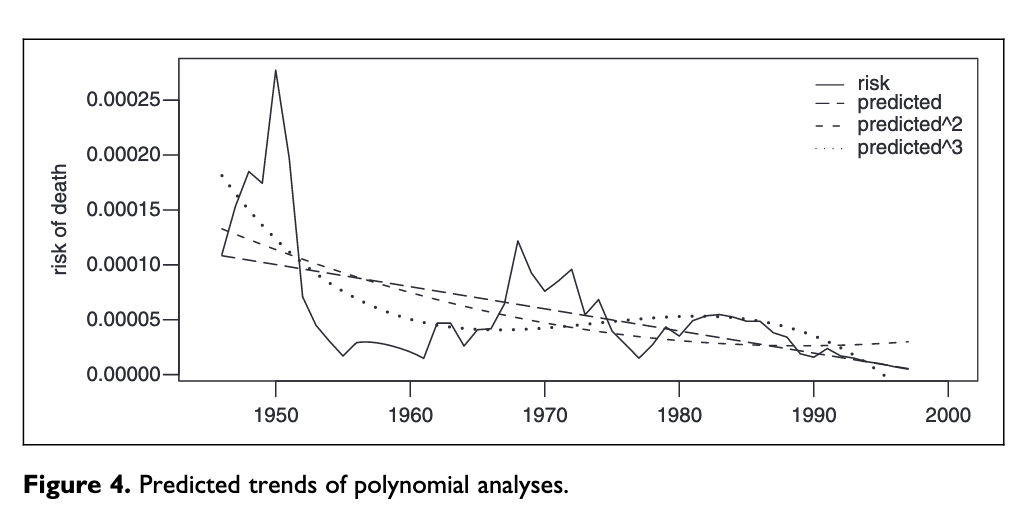] --- # Lacina and Gleditsch (2012) .font150[ * Issues of data quality: - Best estimate is missing for some years, and in others there are two or more estimates available - Conflicts tend to be short: interpolation isn't a great problem - Armies are good record-keepers - Applying smoothing functions work better than arbitrary model assumptions ] --- # Lacina and Gleditsch (2012) .center[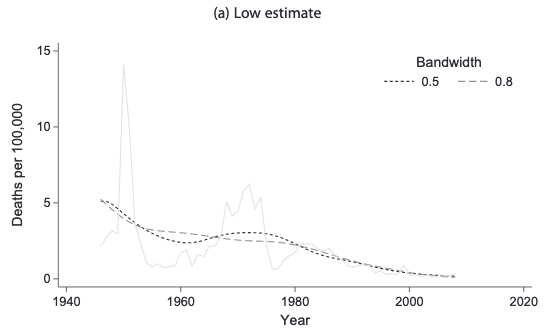] --- # Lacina and Gleditsch (2012) .center[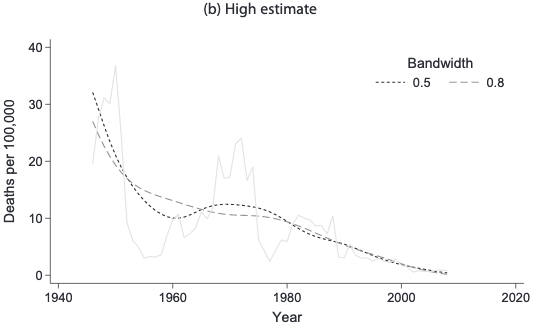] --- # Underestimates or overestimates? .font150[ * The authors argue that: - Media reports tend to underestimate battle deaths - Academic scrutiny corrects eventual errors in data - Experts and NGOs tend to overestimate conflict size - Thus, the biases can go in both directions * _What do you think?_ ] --- # Violence in the Pinochet regime .center[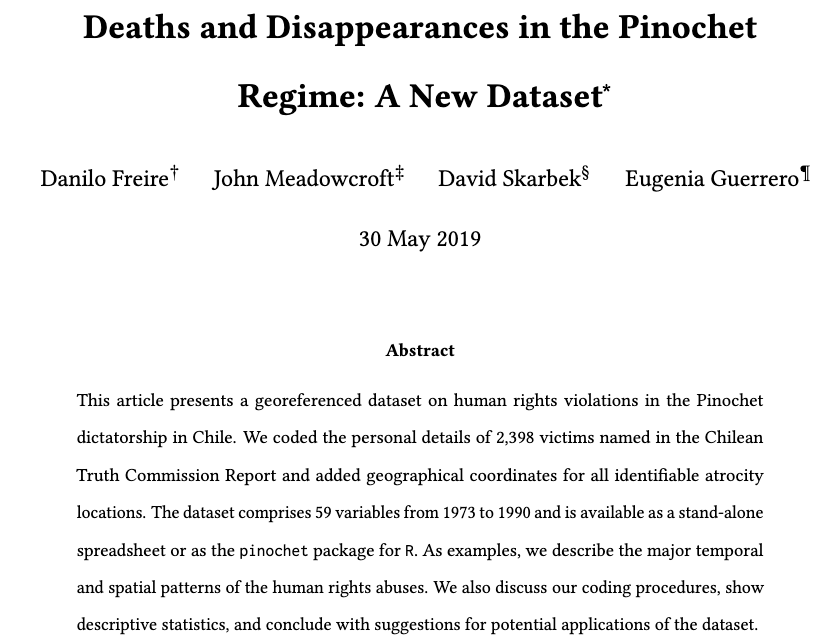] --- # Violence in the Pinochet regime ```r library(pinochet) names(pinochet) ``` ``` ## [1] "individual_id" "group_id" ## [3] "start_date_daily" "end_date_daily" ## [5] "start_date_monthly" "end_date_monthly" ## [7] "last_name" "first_name" ## [9] "minor" "age" ## [11] "male" "occupation" ## [13] "occupation_detail" "victim_affiliation" ## [15] "victim_affiliation_detail" "violence" ## [17] "method" "interrogation" ## [19] "torture" "mistreatment" ## [21] "targeted" "press" ## [23] "war_tribunal" "number_previous_arrests" ## [25] "perpetrator_affiliation" "perpetrator_affiliation_detail" ## [27] "nationality" "place_1" ## [29] "location_1" "latitude_1" ## [31] "longitude_1" "exact_coordinates_1" ## [33] "place_2" "location_2" ## [35] "latitude_2" "longitude_2" ## [37] "exact_coordinates_2" "place_3" ## [39] "location_3" "latitude_3" ## [41] "longitude_3" "exact_coordinates_3" ## [43] "place_4" "location_4" ## [45] "latitude_4" "longitude_4" ## [47] "exact_coordinates_4" "place_5" ## [49] "location_5" "latitude_5" ## [51] "longitude_5" "exact_coordinates_5" ## [53] "place_6" "location_6" ## [55] "latitude_6" "longitude_6" ## [57] "exact_coordinates_6" "page" ## [59] "additional_comments" ``` --- # Violence in the Pinochet regime .center[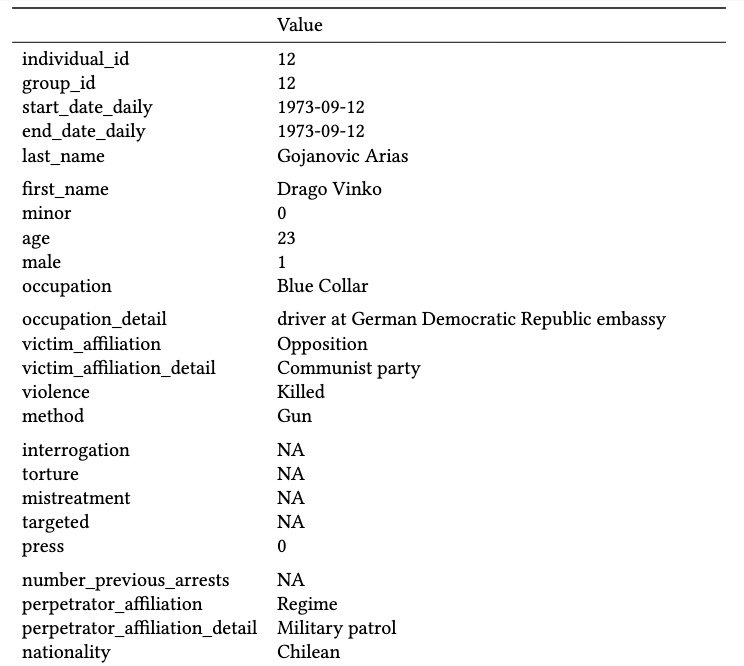] --- # Violence in the Pinochet regime .center[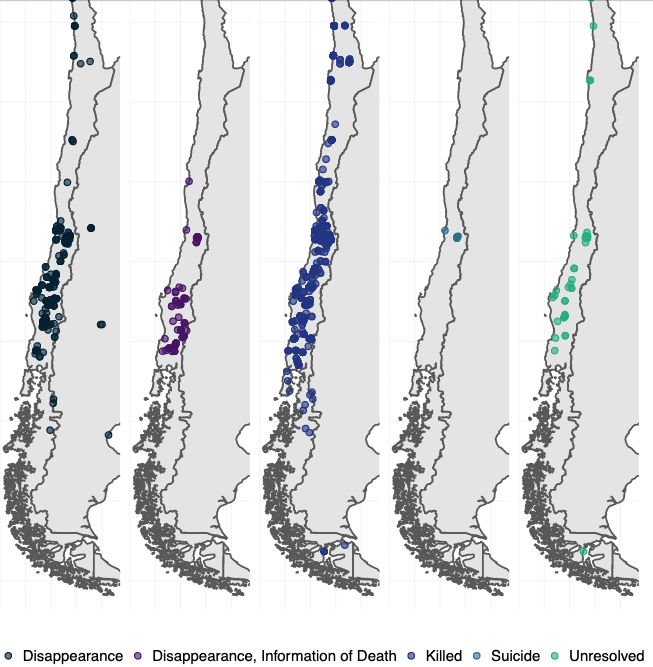] --- class: inverse, center, middle # Wrap-up <html><div style='float:left'></div><hr color='#EB811B' size=1px width=720px></html> --- # To sum up... .font150[ * Short-term and negativity biases are always present in media reports * Long-run upward trend for the economy is very robust * Long-run downward trend for war and peace is less robust * International and civil wars are indeed more rare today * And so are many other types of violence] -- .font150[ * ... but for how long? ] --- # To sum up... .font150[ * The best way to improve those estimates is to understand _cause and effect_ * Knowing whether A causes B allows us to make better predictions about the future * And this is what we will do in this course: - Discuss recent theories about civil wars, genocides, and terrorism - See their limitations and think about how to improve them - Hopefully, have fun along the way! ] --- class: inverse, center, middle # Thanks for coming! See you next week! <html><div style='float:left'></div><hr color='#EB811B' size=1px width=720px></html>